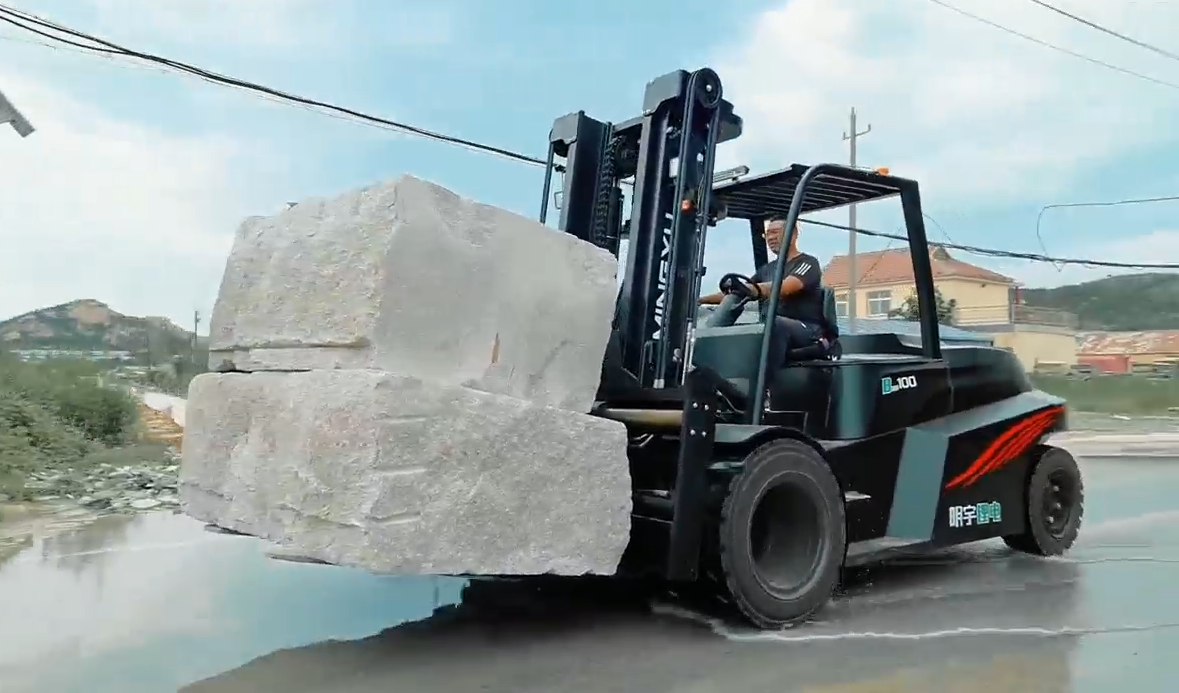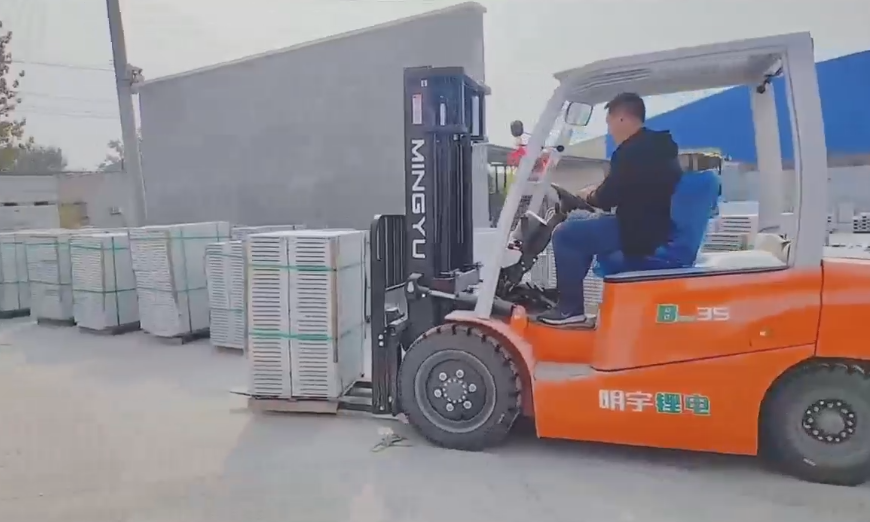Introduction
Electric forklifts have revolutionized the material handling industry, offering a sustainable and efficient solution for moving heavy loads. These powerful machines are increasingly becoming the preferred choice for businesses across various sectors, from manufacturing and warehousing to logistics and transportation.
Unlike traditional gasoline or diesel-powered forklifts, electric forklifts rely on battery power to operate. This fundamental difference results in several key advantages, including reduced emissions, lower noise levels, and lower operating costs. By eliminating harmful exhaust fumes and minimizing noise pollution, electric forklifts contribute to a cleaner and healthier work environment.
Moreover, electric forklifts offer superior maneuverability and precise control, enhancing productivity and safety. Their compact design and zero-emission operation make them ideal for indoor applications, where air quality and noise restrictions are stringent. Additionally, the absence of a complex engine and transmission system simplifies maintenance and reduces downtime.
In this article, we will delve into the intricate workings of electric forklifts. By understanding the fundamental components and their interactions, we can appreciate the engineering marvel behind these machines. From the power source to the hydraulic systems, we will explore each aspect, providing a comprehensive overview of how electric forklifts function.

Basic Components of an Electric Forklift
Electric forklifts are composed of several key components, each playing a vital role in their operation. These components work in harmony to provide the power, control, and lifting capabilities necessary for efficient material handling.
Power System
At the heart of every electric forklift is its power system. This system typically consists of a battery, a motor controller, and one or more electric motors.
Battery: The battery serves as the primary energy source for the forklift. Lead-acid batteries have been traditionally used, but lithium-ion batteries are gaining popularity due to their higher energy density, faster charging times, and longer lifespan. The battery's capacity determines the forklift's operating time before it requires recharging.
Motor Controller: The motor controller is the "brain" of the forklift, regulating the flow of electricity to the motors. It receives input from various sensors and operator controls to determine the required motor speed, direction, and torque.
Electric Motors: Electric motors convert electrical energy into mechanical energy, powering the forklift's drive wheels and hydraulic system. The drive motor propels the forklift forward, backward, and sideways, while the hydraulic motor powers the lifting and tilting functions.
Drivetrain
The drivetrain is responsible for transmitting power from the electric motors to the wheels. It typically consists of a gearbox, differential, and axles.
Gearbox: The gearbox reduces the high-speed output of the electric motor to a lower, more suitable speed for driving the wheels. It also provides multiple gear ratios to optimize performance for different load conditions.
Differential: The differential allows the wheels to rotate at different speeds when turning corners, ensuring smooth and efficient maneuvering.
Axles: The axles connect the wheels to the drivetrain, transferring power and supporting the weight of the forklift and its load.
Hydraulic System
The hydraulic system is essential for l
Working Principles of an Electric Forklift
Startup Process
To initiate operation, the operator inserts a key into the ignition switch and turns it to the "on" position. This action activates the electrical system, powering up the motor controller and various electronic components. The motor controller then initializes and performs self-diagnostic checks to ensure proper functionality. Once the system is ready, the operator can depress the accelerator pedal to engage the drive motor and begin moving the forklift.
Driving Process
The drive motor, typically a DC or AC motor, is responsible for propelling the forklift forward, backward, and sideways. The motor controller regulates the motor's speed and direction by adjusting the voltage and current supplied to it. The operator controls the direction and speed of the forklift using the steering wheel and accelerator/brake pedals.
Steering: Turning the steering wheel activates a steering mechanism, usually a hydraulic or mechanical linkage, which steers the front wheels. This allows the operator to maneuver the forklift with precision.
Braking: Electric forklifts employ a combination of mechanical and regenerative braking systems. The mechanical brake system, similar to that of a car, uses friction to slow down the wheels. Regenerative braking, on the other hand, converts the kinetic energy of the moving forklift into electrical energy, which is then stored back into the battery. This not only helps to conserve energy but also prolongs the battery life.
Lifting Process
The hydraulic system, powered by the hydraulic motor, is responsible for lifting and lowering the forks. The operator controls the lifting and lowering functions using a hydraulic lever or buttons on the control panel.
Lifting: To lift a load, the operator activates the lift function. This causes the hydraulic pump to pressurize the hydraulic fluid, which is then directed to the lift cylinders. The pressurized fluid forces the pistons in the cylinders to extend, raising the forks and the load.

Advantages and Applications of Electric Forklifts
Electric forklifts have gained significant popularity due to their numerous advantages over traditional internal combustion engine (ICE) forklifts. These advantages, coupled with their versatility, make them suitable for a wide range of applications.
Advantages of Electric Forklifts
Environmental Friendliness: Electric forklifts produce zero emissions, contributing to cleaner air quality and reduced greenhouse gas emissions.
Lower Operating Costs: The cost of electricity is generally lower than the cost of fuel, resulting in significant savings on operating expenses.
Reduced Maintenance Costs: Electric forklifts have fewer moving parts compared to ICE forklifts, leading to lower maintenance costs and less downtime.
Quiet Operation: Electric forklifts operate quietly, reducing noise pollution and creating a more pleasant work environment.
Improved Indoor Air Quality: By eliminating harmful exhaust fumes, electric forklifts contribute to better indoor air quality, especially in enclosed warehouses and factories.
Enhanced Safety: Electric forklifts are generally safer to operate, as they do not emit carbon monoxide or other hazardous gases.
Precise Control: Electric motors provide precise control over speed and direction, allowing for delicate maneuvering in tight spaces.
Applications of Electric Forklifts
Electric forklifts are used in a variety of industries and applications, including:
Warehousing and Distribution Centers: Electric forklifts are essential for moving pallets, boxes, and other materials within warehouses and distribution centers.
Manufacturing Facilities: They are used to transport raw materials, components, and finished goods within manufacturing plants.
Retail Stores: Electric forklifts are used in retail stores to stock shelves, move merchandise, and load and unload trucks.
Food and Beverage Industry: They are used in food processing plants, breweries, and wineries to transport ingredients, packaging materials, and finished prod
Future Trends in Electric Forklifts
As technology continues to advance, electric forklifts are poised to become even more efficient, intelligent, and sustainable. Several key trends are shaping the future of electric forklift technology:
1. Increased Battery Capacity and Faster Charging:
High-Capacity Batteries: The development of high-capacity batteries will enable electric forklifts to operate for longer periods without needing to be recharged.
Rapid Charging Technology: Advanced charging technologies will significantly reduce charging times, minimizing downtime and maximizing productivity.
2. Autonomous Forklifts:
Self-Driving Technology: Autonomous forklifts equipped with sensors, cameras, and artificial intelligence will be able to navigate warehouses and perform tasks without human intervention.
Increased Efficiency and Safety: Autonomous forklifts can work around the clock, reducing labor costs and improving safety by eliminating human error.
3. Improved Ergonomics and Operator Comfort:
Ergonomic Design: Forklifts will be designed with ergonomic features to reduce operator fatigue and improve comfort.
Advanced Operator Interfaces: Intuitive control systems and advanced displays will enhance the operator experience.
4. Enhanced Connectivity and Data Analytics:
IoT Integration: Electric forklifts will be integrated with the Internet of Things (IoT) to collect and analyze data on performance, battery health, and maintenance needs.
Predictive Maintenance: By analyzing data, predictive maintenance techniques can be implemented to identify potential issues before they occur, reducing downtime and maintenance costs.
5. Electric Forklifts Powered by Renewable Energy:
Solar Power: Solar panels can be installed on warehouses and distribution centers to generate clean energy to power electric forklifts.
Fuel Cells: Fuel cell technology can provide a longer operating range and faster refueling times compared to battery-powered forklifts.
As these trends continue to evolve, electric forklifts will play an increasingly important role in shaping the future of material handling and logistics. By embracing innovation and sustainability, the industry can achieve greater efficiency, productivity, and environmental responsibility.
Post time:Nov.04.2024
